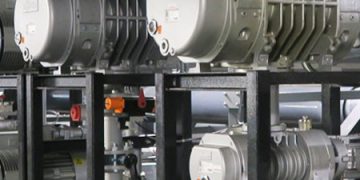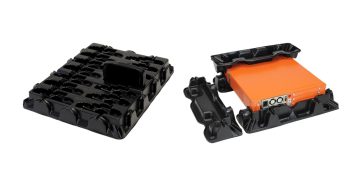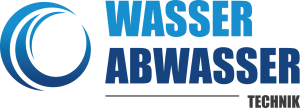Pharmaceutical packaging is a sophisticated and multi-staged process that involves machines and humans diligently working side by side. The packaging process consists of more than 20 steps, and each is very complex.
Critical steps include:
- physically separating products to avoid mixing-up finished and unfinished items.
- multiple checks to ensure that medicines conform to the descriptions given in the product’s batch manufacturing record (BMR).
- identification of packaging that contains relevant medical instructions.
- eliminating excess materials.
- random testing and much more.
However, pharmaceutical factories are frenetic. Workloads can be overwhelming because multiple production lines simultaneously churn, producing or packaging anywhere from 10–100 different medications. The environment’s frenzied nature also can trigger human error at any stage. External factors, such as labor shortages, can also hinder medication packaging.
Therefore, factories must take extra steps when mistake-proofing packaging lines. After all, protecting product safety and a company’s reputation (along with revenue) cannot be underemphasized because human lives are literally on the line. For instance, in 2013, French authorities discovered that zopiclone (a sleeping pill for insomniacs) was discovered in packages of furosemide diuretics. Police investigated deaths possibly linked to the improperly packaged medication, and a large-scale recall was issued.
Given the consequences of improperly labeled or packaged medication, Job #1 is ensuring that the correct medicine and associated instructions are placed in the corresponding packaging. Doing so correctly ensures drug packaging compliance, and it’s precisely where Germany’s Elmicron GmbH steps in to help.
ISO: In Search Of Quality
Elmicron’s specialty lies in barcodes, data matrix codes, and RFID technology for labeling and identification.
“We are the pioneers who helped develop barcode technology and standardize it within Europe’s certification societies,” beams Dr. Harald Oehlmann, Elmicron’s managing director.
Furthermore, thanks to extensive practical experience and a team of high-profile experts, Elmicron has implemented cross-industry and value-added concepts for several of Europe’s top businesses. Given Elmicron’s mission to help customers ensure accuracy via automatische datenkommunikation (automatic data communication), it is fitting that the company worked to earn an ISO 9001 quality management certification.
Carrying ISO 9001 demonstrates Elmicron’s commitment to providing high-quality products that meet both customer quality and regulatory requirements while validating Elmicron’s system for use by integrators and at the customer’s site. Lastly, the ISO 9001 certification verifies that Elmicron’s experts understand the intricacies of quality management systems and corporate governance—exactly what pharmaceutical firms need to maintain product quality and their good standings.
The Dr. Prescribes the Pharmacode Data Check Inspection System
The pharmaceutical industry’s packaging plights caught Dr. Oehlmann’s attention, inspiring him and his team to develop Elmicron’s Pharmacode Data Check inspection system. The system consists of proprietary Elmicron software running on an industrial-grade Noax touchscreen computer. Data capture occurs with Code Corporation’s CR5000 Barcode Reader to read PHARMA-CODE—a highly specialized, and often color-keyed, barcode type used in pharmaceutical packaging.
A trademark of Laetus, PHARMA-CODE prevents the intermixing of medication packaging. A specific PHARMA-CODE correlates to a specific medication, such as an antibiotic. This code is then assigned to every part of the medication’s packaging (for example instructions, labels, blister packs, and contraindication info). IT systems manufacturers, such as Elmicron, then create validation solutions.
With a firmly cemented foundation thanks to their barcode standardization work, a chance technical support request united Elmicron and Code.
“In the early 2000s, Elmicron [via US-based Omnitron Systems, a network connectivity specialist] received the task for technical support in Europe from an overseas client,” recalls Dr. Oehlmann.
The support contract was linked to Code Corp., and after their initial project, a partnership solidified.
“We have been working with Code for decades, and they’ve consistently proven their reliability in terms of high quality and good service,” reflects Dr. Oehlmann. “Our joint work has developed into a successful, long-term partnership. So when the need for Pharmacode Data Check arose, Code’s CR5000 was our first choice since we trust Code products. They provided us with a suitable device for our project.”
As Dr. Oehlmann recollects, early during development, Elmicron’s team mandated that the CR5000 must provide rapid barcode scanning. Additionally, the scanner had to read the same barcode multiple times with a brief break between scans, all while supporting hands-free workflows. Code reps demonstrated that the CR5000 met Elmicron’s needs during product evaluation, attracting the attention of developers.
Integration began, and the firm relabeled the CR5000 as Elmicron Model ECR 5210 linear & 2D, “Pharmacode Data Check configuration.” Beyond their essential requirements, the developers discovered additional CR5000 features and functions that would give Elmicron’s system additional flexibility. For instance, the barcode reader provides Pharmacode Data Check support and presentation mode, as well as manual and automatic scanning.
Dr. Oehlmann also added that the barcode reader’s USB-POS scanner interface is highly advantageous because no Windows driver is needed, and it has a binary interface. Moreover, via USB-POS, CR5000 offers a bidirectional interface to the NOAX touchscreen for displaying “OK” or “wrong data” for the current scan. Another particularly unique feature, he notes, is that the CR5000 is JavaScript-based and will run virtually any software users need. Nearly all of Code’s barcode readers are built on JavaScript, enabling them to offer data parsing and other functionalities.
The savvy integration of industrial- and enterprise-grade components has given the Pharmacode Data Check inspection system a fair degree of customization. Thus, Elmicron has modified the system for deployment in automotive production, electronics, tobacco, consumer packaged goods, and the marine sector, among others.
The Challenge: Problems Perfectly Packing Pills
Given the importance of the system’s mission, flawless performance was a must. However, Code and Elmicron faced two challenges during system development:
- The Pharmacode Data Check device would unexpectedly reboot, stopping barcode scanning, which necessitated troubleshooting because a missed scan during packaging would lead to mistakes. Code’s tech support team had this sorted out within four weeks.
- Quick re-scan prevention of the same code had to be disabled by configuration codes.
“We would advise anyone who requires a barcode scanner solution, both hardware or software, to use the full capability of Code’s solutions,” encourages Dr. Oehlmann.
The Results: Growing Demand for Quality Assurance
Elmicron’s Pharmacode Data Check Inspection System is enjoying demand across Europe because it hits the goals of:
- Quality assurance through error detection and avoidance.
- Simple operation.
- Integrated functionality and automation.
Moreover, Elmicron’s customers can guarantee 100 percent control of the medical packaging process, giving them a decisive advantage over competing firms.

















